Chapter 29: Weeds and weed control
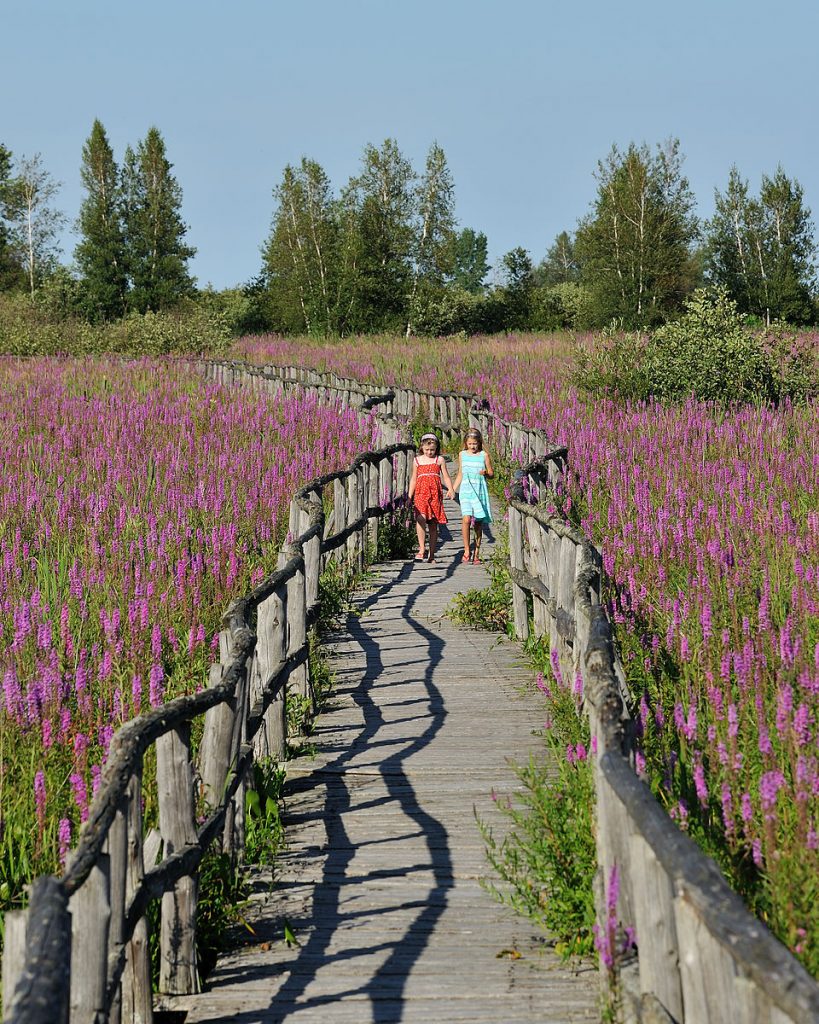
Ralph Waldo Emerson defined a weed as ‘a plant whose virtues have not yet been discovered’, but in fact a number of weeds were known to have ‘virtues’ and were spread by humans intentionally. Dyer’s woad is a significant pest in the western U.S. but was brought to North America intentionally for its use a source of blue dye (hence the common name). Many weedy plants, e.g. purple loosestrife (Fig. 1), were intentionally introduced by gardeners who found them attractive. A large number of weed organisms of all types are similarly the result of intentional introduction in new habitats (honeybees, earthworms, gypsy moth, starlings and many more).
Is there a better definition of weed? Ecologists consider organisms to be ‘weedy’ if they have a suite of characteristics (high reproductive potential, extensive dispersal abilities, rapid growth rate, ability to reproduce even under adverse conditions) that would make them likely to appear and survive in disturbed habitats. Disturbed habitats, sometimes called ruderal habitats, are areas that have once been populated but some disturbance, e.g. fire, has eliminated what once lived there. Significant for terrestrial habitats, they generally are sites with developed soils, as opposed to sites that were never vegetated and have no soil. So although ecological weeds are considered ‘pioneer species’, they are not pioneering onto previously uninhabited land with very young soils. Ecological weeds can colonize and quickly dominate a disturbed site but may not persist because they often are unable to compete with other species that eventually arrive at the site.
But ‘weed’ is not used just by ecologists and its definition is both utilitarian and subjective:
‘A plant that interferes with the management objectives at a particular location. It is a plant growing where it is not wanted. Under certain situations, the plant may not be totally undesirable.’
This definition focuses on plants but undesirable organisms come from the entire spectrum of life, including the non-plant organisms considered in this book: cyanobacteria, green algae, red algae, diatoms, dinoflagellates and fungi.
Weeds are ‘pests’, organisms that are undesirable for reasons that are specific to a particular situation and, as noted above, their undesirable nature depends upon situation.
- honeybees are pests when they nest in houses or perhaps when they outcompete native bee species
- earthworms are desirable in agricultural situations but are weeds in native habitats where they can alter conditions and disrupt the native community
- dandelions are weeds in lawns, where some consider them unsightly, but are useful to pollinators and to foragers who eat their leaves and flowers
- sandbur is highly undesirable on beaches because of its sharp fruits that are painful to step on and stick to clothing
- dyer’s woad clearly is (was) useful as a source of dye but if one is managing land for other purposes then it is a weed
- weeping willow trees are desirable as ornamentals but their roots can clog drainage systems
- the nitrogen fixing bacterium Rhizobium is desirable if it invades plant roots in habitats where nitrogen is relatively scarce. When nitrogen is abundant Rhizobium may actually decrease plant growth because they are being fed by the plant
The last example highlights the fact that there is some overlap between ‘weeds’ and ‘disease’, something that will be considered in the next chapter.
TOPICS
- Features of weeds
- Controlling weeds
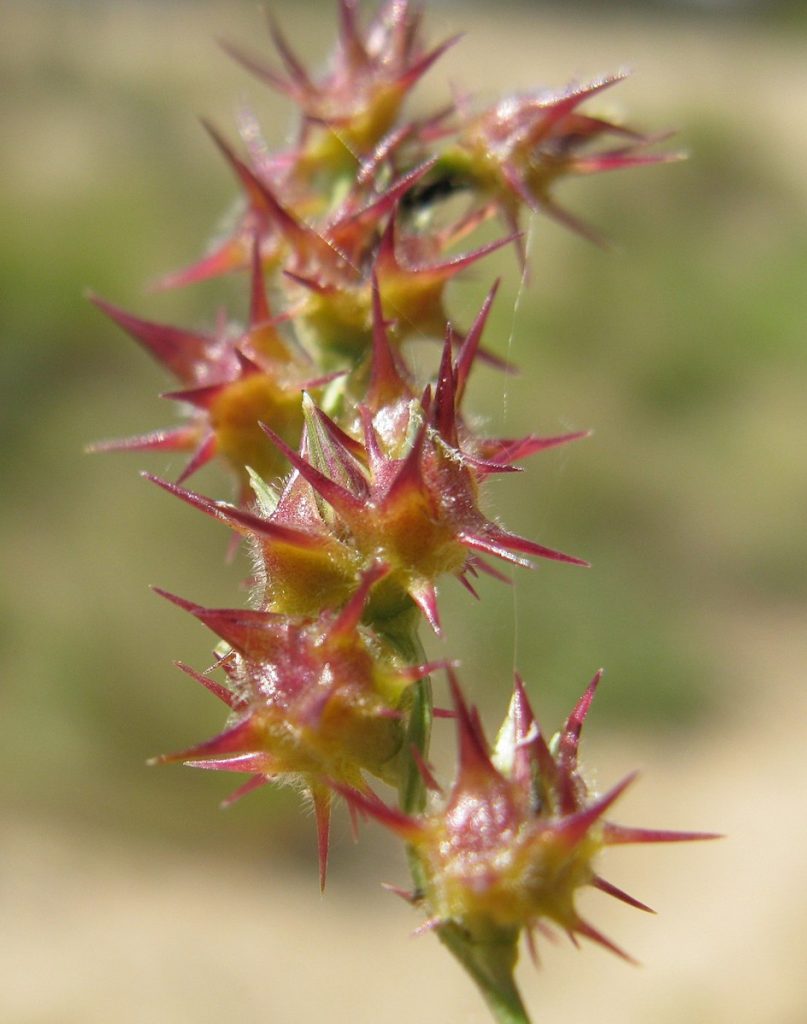
Features of weeds
As mentioned above, weedy plants typically grow fast and reproduce both rapidly and abundantly. But given the flexible and utilitarian definition of weed a key feature of weeds is that they must have characteristics that someone might consider undesirable. Here are some examples:
- dandelions interrupt the smooth continuous texture of a lawn giving what some consider a an undesirable look.
- sandbur produces fruits that are very painful to step on or get caught in a stocking
- burdock, beggar’s tickseed, stickseed and many others produce fruits that stick on clothing
- box-elder trees produce an unappealing form that readily sheds branches. Its abundant fruits clog gutters
- poison ivy, wild parsnip, giant hogweed, St. Johnswort are toxic to many humans
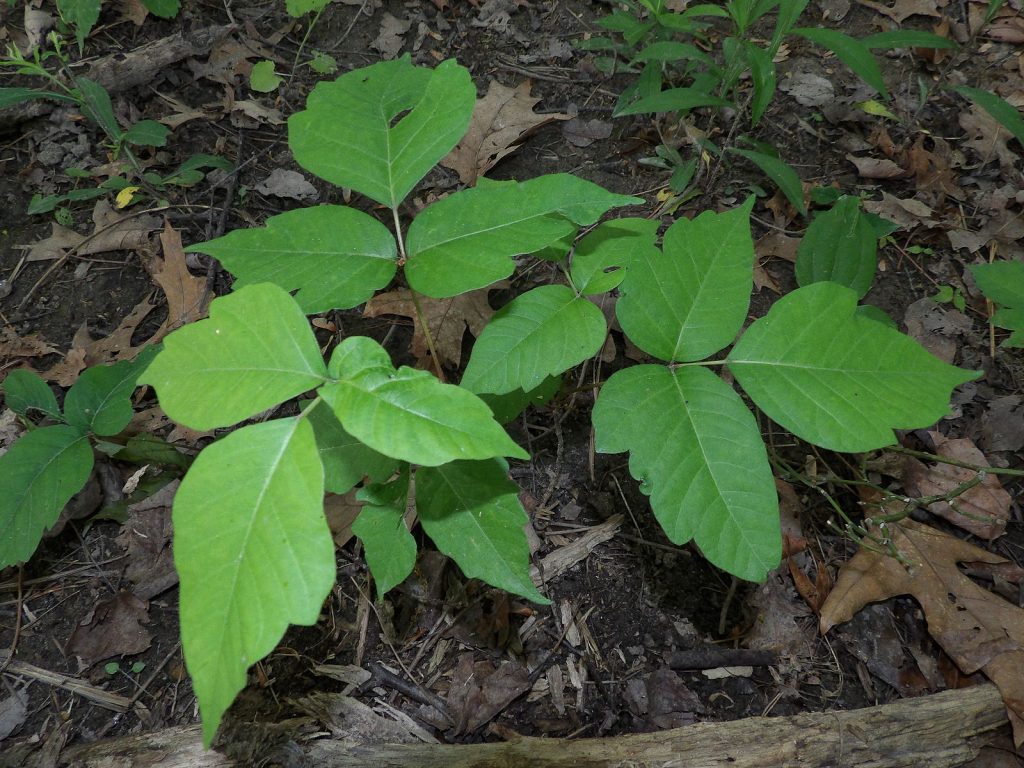
The foremost undesirable feature of agricultural weeds is that their presence in cropland deters the growth of whatever crops are being grown, an interaction that generally would be labelled competition, a concept that is easy to cite but is often much more difficult to pin down. The basic idea is that if two species utilize the same resources (water, light, nutrients) then the presence of of a competitor can reduce the availability of these resources and thereby diminish the growth of the crop. The phenomenon of decreased crop growth when in the presence of weeds is well established, but the exact mechanism is elusive and certainly may vary between different weeds. Note that the best competitor for any particular crop plant is another individual of the same type, because it requires the same resources and acquires them in the same manner. Thus intraspecific competition (between individuals of the same species) may be hard to separate from interspecific competition (crop vs. weed). Keeping track of resources is often challenging and other interactions might account for the pattern. C ompetition could be due to factors such as allelopathy (the weed produces chemicals that deter the growth of the crop) or perhaps because the weed attracts insect pests/disease organisms that may affect the crop. For these reasons competition is often defined without the specific requirement of resource depletion. Most agricultural weeds are plants that deter the growth of crop species for undetermined reasons.
What might make a particular plant likely to be an agricultural weed? Here there is large overlap with characteristics of ecological weeds:
- weeds seeds germinate readily with few or no specific germination requirements
- weeds grow quickly and since resource acquisition is strongly tied to plant size, growing quickly allows weeds to be very effective competitors
- weeds readily reproduce, allowing for their perpetuation on a site and producing a substantial ‘seed bank’ of seeds in the soil. Although most of their seeds germinate readily, not all do, and some seeds remain viable for tens of years, meaning that ungerminated weed seeds remain in the soil for prolonged time periods
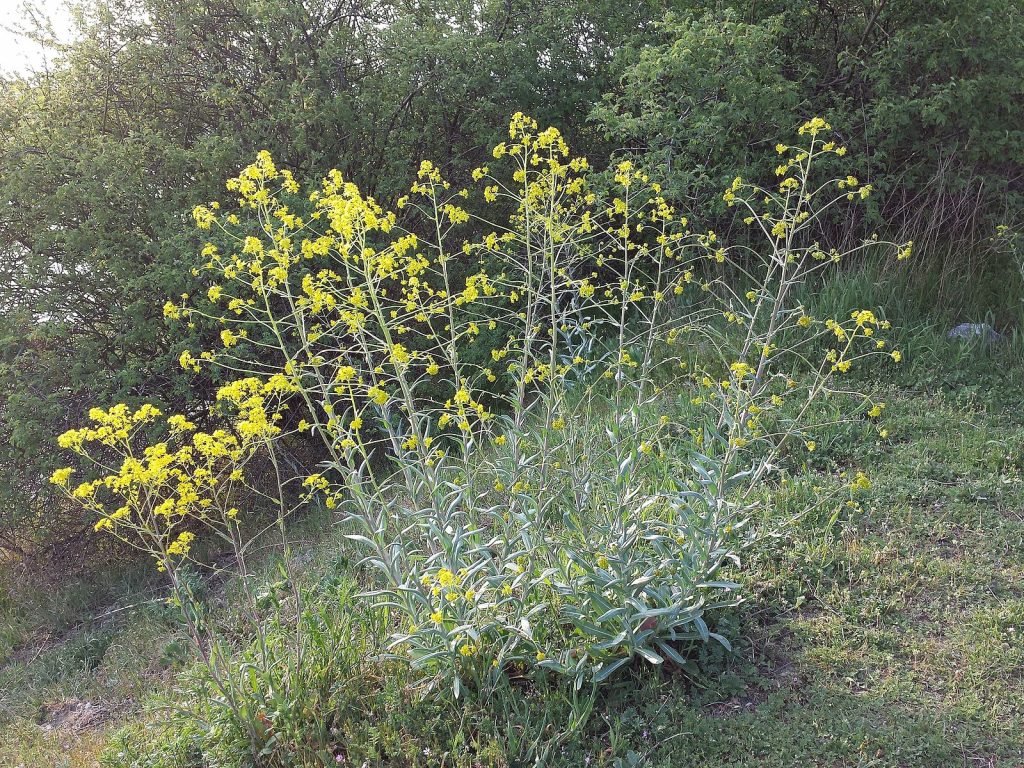
While the above apply to annual weeds, there are also perennial weeds which reproduce readily from fragmented roots which may be produced by tilling. Why till? because most crops are annuals and they would have a very hard time competing against already established plants. But note that tilling ‘plays into the weed’s strength’: it is a form of disturbance which is generally something that weeds require.
The characteristics listed above also would be desirable features of a crop plant: germinate readily, grow quickly, reproduce abundantly. Indeed, several crops are thought to have been domesticated from weeds (e.g. wheat, sunflower, barley, carrot).
Another feature that is commonly associated with weeds is that they are non-native, i.e. they were introduced into an area where they previously had not be present, generally because of human activity (both intentional and unintentional). While some would consider any non-native to be a weed, most would require that the introduced species must be invasive, i.e. spreading from where it was introduced. Many introduced species are invasive and this is generally attributed to the fact that ‘natural controls’ (herbivores, disease) are not simultaneously introduced with the weed. While this certainly explains the invasive nature of some introductions, other factors come into play. Dyer’s woad was introduced in the eastern U.S. and showed only a modest invasive nature as it spread westward and was restricted to repeatedly disturbed sites like the sides of roads and train tracks. Arriving in California and Utah in contaminated alfalfa seed, its behavior changed substantially, becoming much more invasive and entering habitats that are much less disturbed, replacing native plants. Part of this behavior is probably due to the fact that woad’s native habitat is much more similar to the arid west than to the more mesic eastern and central part of the country.

An interesting invasive pattern is shown by black locust, a tree native to central and southeastern U.S. but not to the northeast. After it was intentionally introduced to the northeast it has become invasive as it has in several other parts of North America. What had limited its spread previously is unknown. Again appreciating that what a weed is is subjective, black locust might be considered a weed in the northeast but not in the areas where it is native.
Another interesting pattern is seen in Phragmites australis, ‘common reed grass’. Apparently a variety of this species was native to North America and was present when European’s arrived. This native variety of the species is not invasive and does not form large monotypic stands. Ecologists noted that the behavior of the plant changed drastically in the 20th century, with the plant becoming much more invasive. What actually happened was that a European variety of the same species had been introduced and this was the plant was exhibiting the invasive behavior. The two varieties (non-invasive North American; invasive European) are very closely related (same species) and very difficult to distinguish. Apparently minor genetic changes can be responsible for invasive behavior.
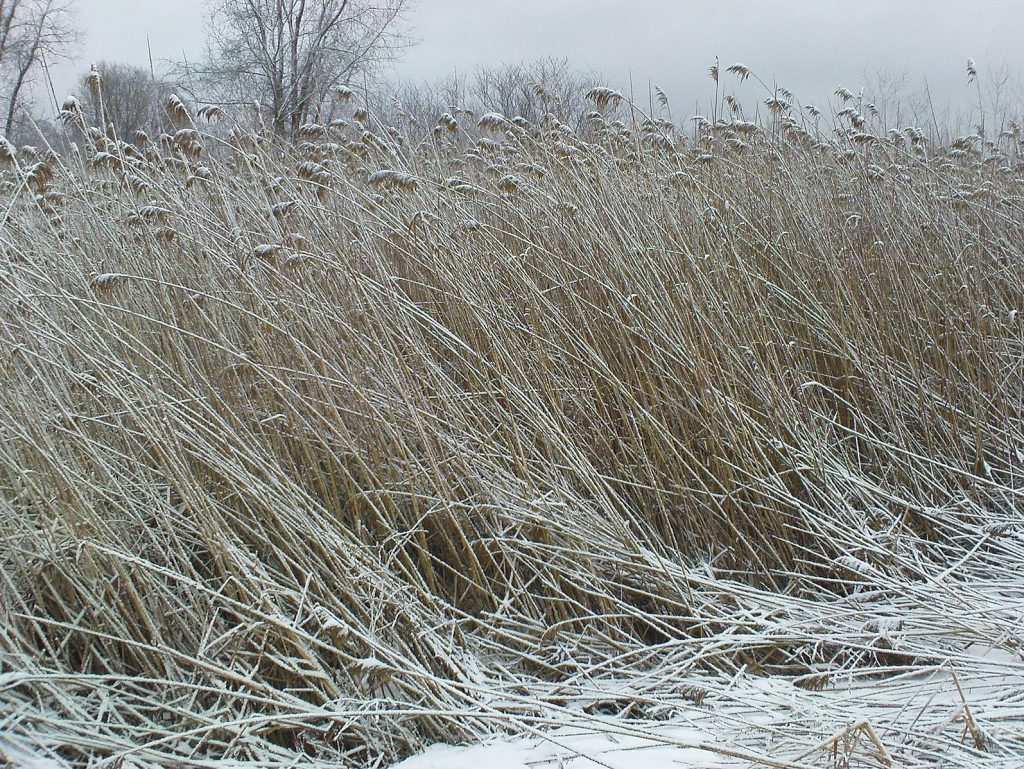
However, lots of weeds are ‘natives’ (ragweed, giant ragweed, sunflower, Jerusalem artichoke, milkweed, New England Aster, goldenrod) and most of these have not invaded new habitats but have continued to occur in the disturbed habitats found in any particular region.
Weed control
In most situations weeds cannot be permanently eliminated but their populations may be controlled using three approaches: (1) chemical control, using pesticides (herbicides) to kill the weed (2) biological control, using biological agents (pathogens, herbivores) to reduce weed populations and (3) cultural control, modifying how the land is maintained in order to reduce weed populations.
Chemical control
Chemical control is a recent innovation, only becoming a significant control agent in the last eighty years. The basic idea is simple: find some chemical that kills weeds. The difficulty is that most chemicals that kill weeds are non-selective, i.e. they don’t just kill weeds, they kill all or most plants, including those whose growth you are trying to promote. A wide variety of herbicides have been developed but the three below are widely used and show a degree of selectivity. Therefore can be used in some situations without damaging the plants/crops one is trying to grow.
2,4 D (2,4, dichlorophenoxyacetic acid) is the oldest widely used herbicide. Its discovery as a useful product, a weed killer, was the result of ‘basic’ research, i.e. research that was not focused on utility (developing a weed killer) but rather research that simply involved developing an understand of the natural world. In this case, workers were studying the effects of auxin, the first chemically identified plant hormone, originally studied by Darwin one hundred years earlier. The only naturally occurring auxin is indoleacetic acid, but early in the 1940’s workers discovered a number of chemicals, with structures similar to indoleacetic acid, that could produce similar effects on plant growth and development. One of these artificial auxins was 2,4 D. It was up to Dr. Franklin D. Jones to do some ‘applied’ science, i.e. apply basic research to a practical problem. Dr. Jones was looking for something to kill the poison ivy that was plaguing his children. He tried 2,4 D and found it was very effective in killing poison ivy. Significantly, 2,4 D is selective: it kills most broadleaf plants (dicots) but spares ‘narrow-leaved’ plants, grasses and similar species. Because this selectivity matches what one might look for eliminating lawn weeds and weeds of cereal grains (e.g. corn, wheat), 2-4 D has proved to be highly useful.
Roundup (glyphosate) was developed in the 1970’s and is the most widely used herbicide both in agricultural situations and in home/garden situations. It is not at all selective, basically killing whatever plants to which it is applied. It is also a systemic herbicide, meaning that if it is applied to the leaves it can be transported to the roots and rhizomes and can kill them too. Selectivity has been developed because resistance to Roundup, using genes from bacteria, has been genetically engineered (i.e. gene transfer) into several crop species, first soybeans (‘Roundup Ready Soybeans), and later to corn and cotton. Fields with these specific crops can be treated with Roundup to kill all other plants.
Atrazine is the second most used herbicide in the U.S., but mostly in agricultural situations and less in residential situations. It is selective, killing most broadleaf species and many weedy grasses, but being tolerated by several crop species: corn, sorghum, and sugar cane (all are grasses). Additionally, an atrazine resistant (GMO) canola variety has been developed as well.
Concerns about herbicides abound and include: human health concerns, ecological concerns and concerns about the development of herbicide resistant ‘superweeds’. Both Roundup and Atrazine have been used extensively enough that there are new varieties of weeds that are unaffected by these chemicals, comparable to the evolution of antibiotic resistant bacteria.
Biological control
Biological control involves the use of other organisms to deter the growth of weeds. In general, this type of control is developed for introduced, invasive species of weeds. A search is made for herbivores or pathogens (see Chapter 30 on disease) that are native to where the introduction came from but are not present in the region that they have invaded. Care must be taken to avoid introducing species that might be harmful to existing native species. This is more likely if the biocontrol agents selected are ‘specialists’ in their feeding habits. Purple loosestrife is an example of an invasive weed that has been controlled (not eliminated) by introductions of insect herbivores, beetles and weevils that specialize on purple loosestrife. These species are common in purple loosestrife’s native habitat (Europe and Asia) but were not introduced to North America when purple loosestrife was.
Cultural control
By definition weeds are always a problem, at least a problem for someone. Although weeds can be an ‘issue’ in native habitats, the vast majority of weed problems involve humans (gardeners, farmers) trying to raise specific plants, i.e. trying to ‘culture’ plants that are somehow desirable. The cultural practices that are followed can influence the magnitude of the weed problem. The choice of crops, the timing of planting, the seeding density, the distance between rows, the number of sequential seasons that a crop is planted, all are cultural practices that may influence the severity of weed problems. Because most crops are annuals, they need to be planted each year, and planting involves disturbance, thereby encouraging weed growth. Indeed, some early 19th century farmers considered early versions of the plough to be ‘poisoning the soil’ and promoting weed growth. Appreciating that farmers are in a catch-22 condition, they need disturbance but disturbance promotes weed problems, there are cultural practices that can lessen the problem: such as the timing of the ploughing and how intensive the ploughing is. A modern technique called ‘no-till’ farming utilizes minimal tilling, thereby giving weeds less area to utilize. Moreover, the area that is available is seeded with a crop that may out-compete the weeds. Perennial non-woody crops such as alfalfa, asparagus, strawberries, raspberries require different cultural practices that might include items like mulching, mowing, tilling or the intentional planting of understory plants that might suppress weedy growth. This is also true for woody perennial crops like grapes and apples. Cultural practices vary widely depending on the crop and its characteristics. For instance flooding is an effective means of weed control but can only be utilized if crops, e.g. rice, tolerate the flooding. Fire can be used for annual crops and for woody (tree) crops if it is a low intensity surface fire.
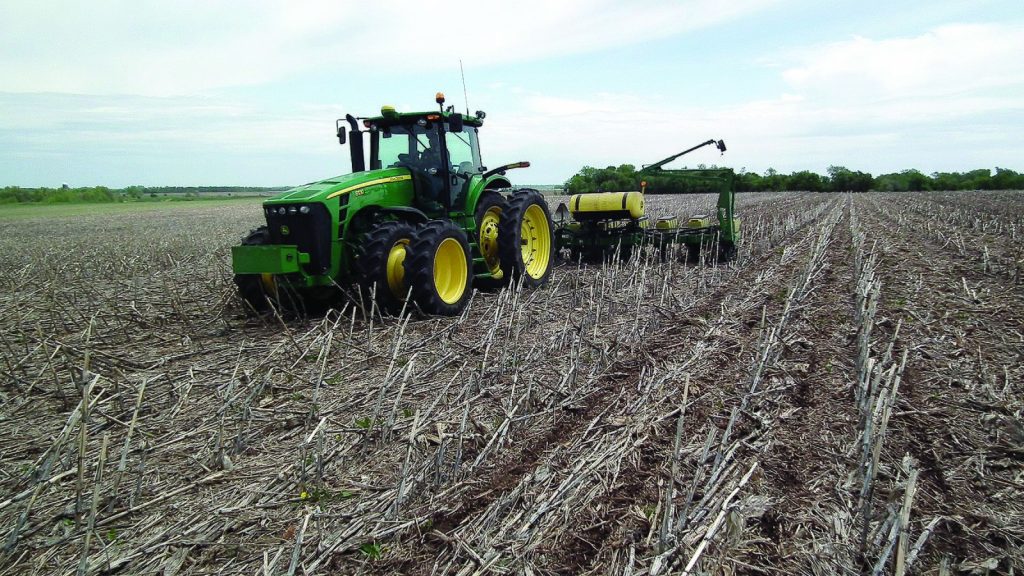
Most weed management strategies utilize ‘Integrated Pest Management’, an approach that incorporates chemical, biological and cultural approaches to manage not only weeds but also insect pests and pathogens.
Further Reading and Viewing
- “The Discovery and Development of 2,4-D” by Gale E. Peterson.
Media Attributions
- Purple-loosestrife © Saffron Blaze is licensed under a CC BY-SA (Attribution ShareAlike) license
- Sandbur © Macleay Grass Man is licensed under a CC BY (Attribution) license
- Poison Ivy © Broly0 is licensed under a CC0 (Creative Commons Zero) license
- Dyer’s woad © Stefan.lefnaer is licensed under a CC BY-SA (Attribution ShareAlike) license
- Indigo © H. Zell is licensed under a CC BY-SA (Attribution ShareAlike) license
- Phragmites australis © EHM02667 is licensed under a Public Domain license
- No till farming © USDA NRCS South Dakota is licensed under a CC BY-SA (Attribution ShareAlike) license

